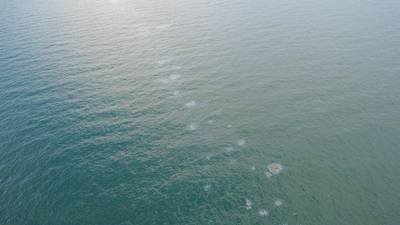Coast Guard Monitoring Oil Discharge from Scuttled Liberty Ship
The U.S. Coast Guard and Florida’s Department of Environmental Protection (DEP) are monitoring periodic discharges of oil from the Liberty Ship Thomas Heyward, a World War II era vessel sunk in 1977 to serve as an artificial reef approximately six miles southwest of Destin, Fla.
Following Hurricane Sally in September 2020, the National Response Center (NRC) began receiving reports of pollution in the vicinity of the artificial reef. Coast Guard personnel conducted preliminary investigations; contacting other government agencies to include Florida’s DEP, Florida Fish and Wildlife Conversation Commission (FWC), National Oceanic and Atmospheric Administration (NOAA), Army Corps of Engineers, U.S. Environmental Protection Agency (EPA) and Okaloosa County’s coastal resource manager.
Since receiving initial reports of pollution, the Coast Guard, together with federal, state and local stakeholders, continued to monitor the situation. Earlier this year, the Oil Spill Liability Trust Fund (OSLTF) was utilized by the Coast Guard for further assessment and potential cleanup operations. The OSLTF was established as a funding source to pay appropriate assessment, removal costs and damages resulting from oil spills or substantial threats of oil spills to navigable waters of the United States.
In August and September of 2022, the Coast Guard received additional NRC reports of pollution in the vicinity of the artificial reef. The Sector Mobile NOAA scientific support coordinator and Coast Guard members again assessed the site in September 2022. An oil sheen was observed in the vicinity of the artificial reef and a sheen sample was collected for laboratory analysis. Lab results identified the surface sheen sample as consistent with a heavy marine fuel oil. A follow up assessment in November 2022 indicated no sheen in the vicinity of the reef.
The periodic discharges appear to be seasonal in occurrence and may be associated with warmer weather and higher sea temperatures that would allow the residual oil remaining in the artificial reef to move more freely and ultimately discharge from any tank openings. These discharges may result in visible surface and, or subsurface expressions of oil. All mariners are recommended to avoid contact with any product discharged from the artificial reef. The Coast Guard remains committed to safety, security, and marine environmental protection in the navigable waterways of the United States.











